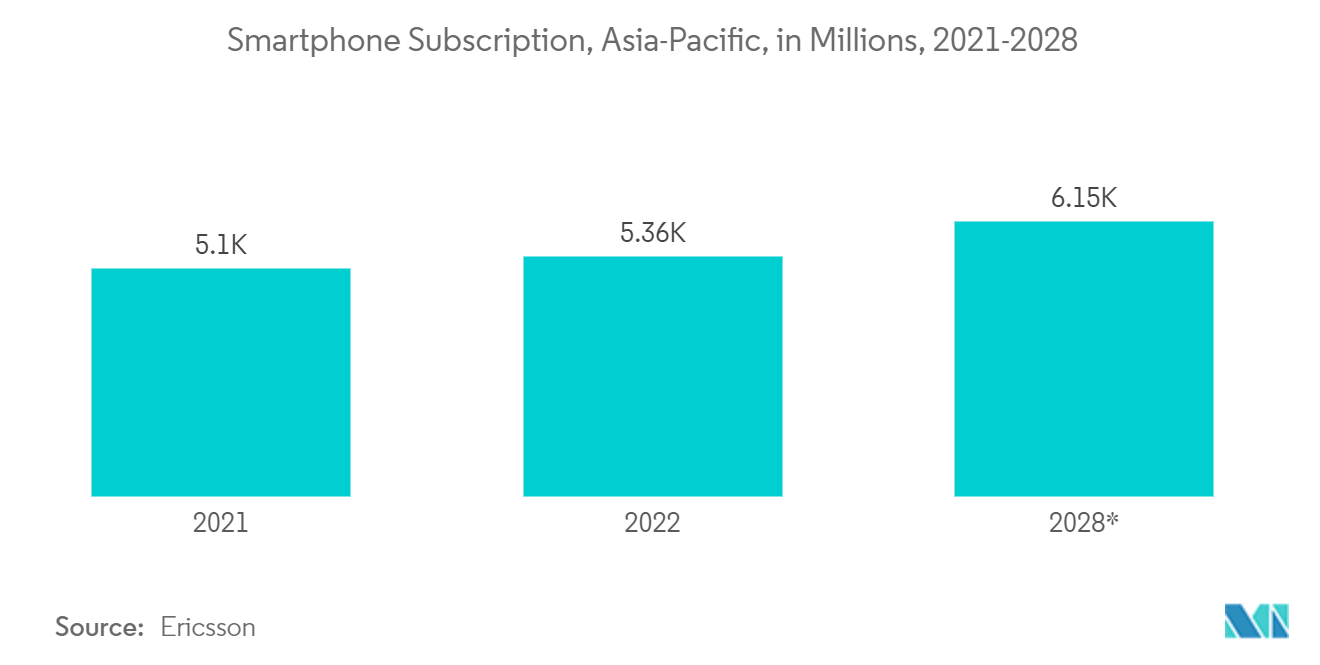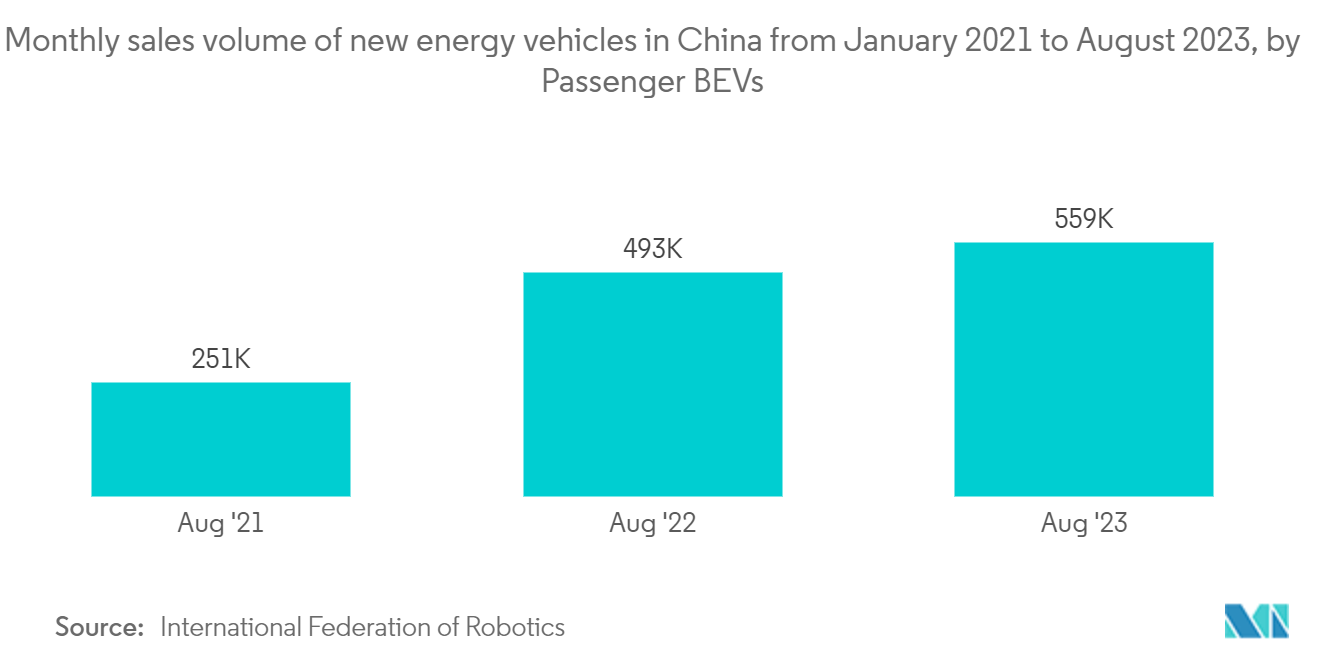Market Trends of Asia-Pacific MPU Industry
Increasing Demand for Smart Phone and Consumer Electronics in the Region
- With the growing advancements in technologies, the use of consumer electronic devices has increased drastically over the past few years. Consumer electronics have attracted customers with various technological advances, which have increased the demand for microprocessors during the forecast period.
- Consumer electronics include household appliances, smartphones, computers, laptops, and other electronics, such as wearables, gaming consoles, etc. The demand for microprocessors in the industry is increasing with product introduction in consumer electronics.
- Smartphones have emerged as significant elements for the use of microprocessors. With the increasing smartphone innovations and the growing smartphone penetration rate, there are further opportunities for growth, especially in emerging countries. According to Ericsson's report, smartphone subscriptions in Asia-Pacific will be 5,300 million in 2022 and are expected to grow by 6,150 million in 2028. This growth in smartphone subscribers is expected to drive the demand for Asia-Pacific microprocessors (MPUs) during the forecast period.
- Moreover, the Asia-Pacific Microprocessor market will witness high growth due to the adoption of smart homes and smart cities. As these trends govern a higher adoption of connectivity technology in consumer appliances, household appliance manufacturers increasingly focus on integrating IoT technologies with products to help customers stay connected with their homes.
- The increasing disposable income, growing internet penetration, and rising awareness of digital technologies are the driving factors behind the market's growth. Furthermore, major industry players focus on new product development to overcome the challenges and offer a reliable user experience.
- For instance, in January 2023, Advanced Micro Device, Inc. released its new Ryzen 7000 series of mobile microprocessors, which uses its Zen4 architecture with up to 16 cores and Radeon DNA (RDNA) 2 Graphics Processing Unit (GPU). The Ryzen 7040 features new generation RDNA3 graphics and integrates a new artificial intelligence (AI) engine, making it one of the most advanced mobile processors for gaming.

Increasing Penetration of Industrial Automation to Augment Market Growth
With the rising Industry 4.0 and automation trend, the manufacturing sector across various Asian countries, particularly China, India, and Japan, is growing significantly. Many manufacturing hubs in China, Japan, and Taiwan drive the Asia-Pacific microprocessor market.
China is among the fastest-growing countries, with a very high industrial production rate. These factors act as drivers for the automation market in the country. Investments are being planned to aid the quality of growth, address environmental concerns, and reduce overcapacity, for the same. The number of companies deploying robotics and process and factory automation technologies in the country is less when compared to the enormous size of China's manufacturing base and the number of workers it employs. This trend presents a great opportunity for companies operating in the Asia-Pacific microprocessor market.
The use of robots in factory automation continues to grow as it significantly increases efficiency, reduces costs, and improves quality. Modern autonomous robots are hybrids of superior sensors, microprocessors, and artificial intelligence (AI) software. The processor is not only the heart of the robot but also the brain. Processors help to implement the various robot control functions. The processor gives the robot some native intelligence that will allow it to function independently.
Moreover, monthly sales volume of new energy vehicles for BEVs in China has grown from 251k in August 2021 to 559K in August 2023. The surge in BEV demand requires manufacturers to scale up production efficiently. Automation solutions can handle oncreased output while maintaining qulaity.
Furthermore, major Korean businesses are fully committed to moving their manufacturing to a smart solution. The companies improved productivity and profitability through expediting manufacturing automation solutions. As a result, the companies witnessed reduced expenses throughout the supply chain. These major Korean companies will play a crucial role in upgrading obsolete centralized systems to automatically controlled smart platforms to create sophisticated industrial environments in Korea.


